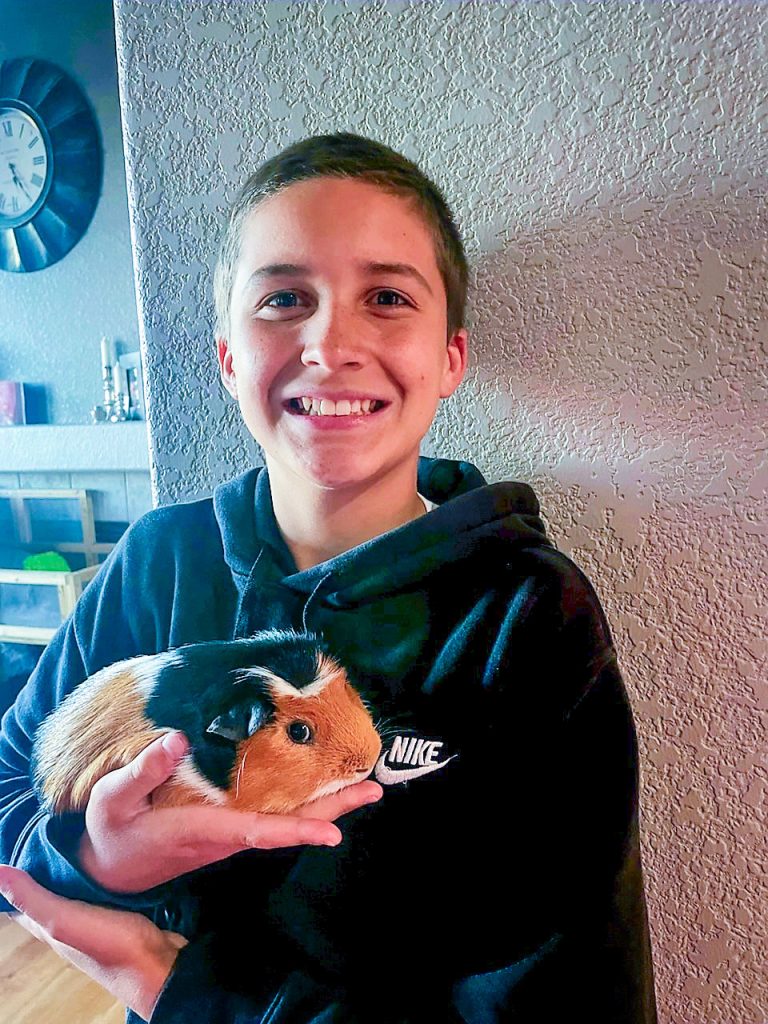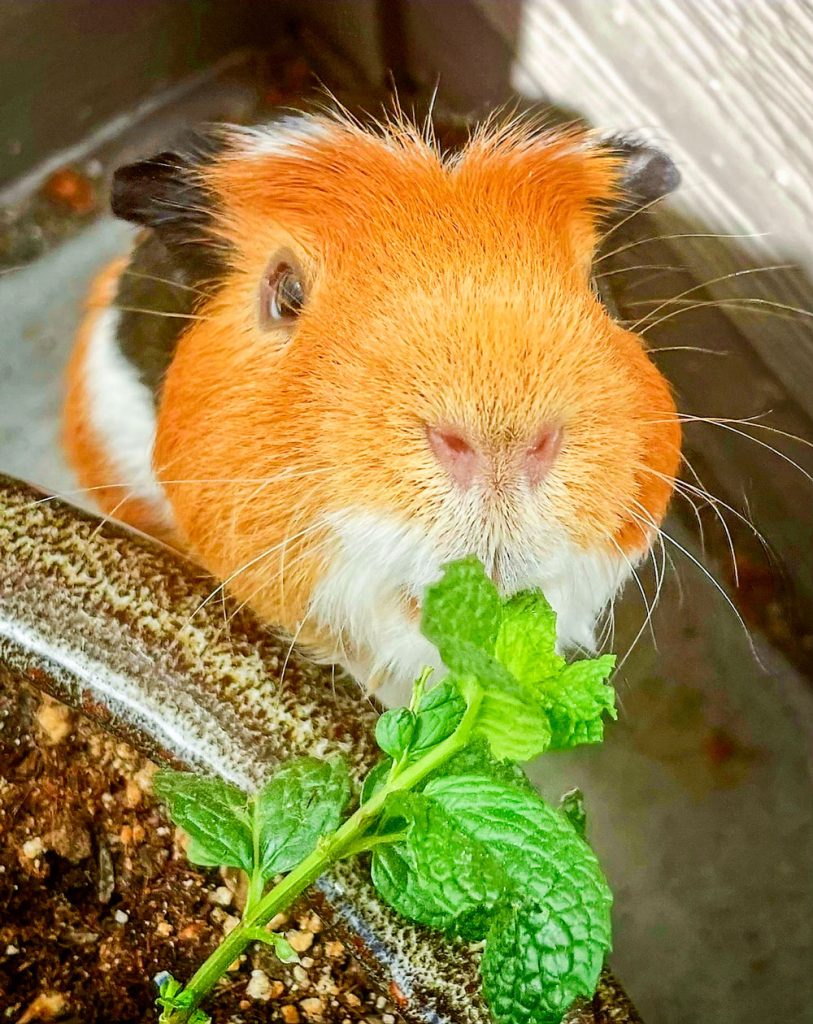Popcorning and wheeking are guinea pig speak


Guinea pigs are social and affectionate. Gabe is relaxed and purring as Grant Neira holds him.
Guinea pigs have long been a favorite first pet for families; and still are, for good reason. They are small, lovable, furry friends—gentle, sociable and easy to care for.
In December 2020, the Neira family—Amy, Nick, Gavin (19), Garrett (16) and Grant (12) of the Turquoise Terrace neighborhood, adopted American guinea pigs Gabe and brother Griff from the Buddy Center (Humane Colorado) in Castle Rock. Since Amy had two guinea pigs growing up, it was a natural selection for the family’s first pets.
Gabe and Griff were just nine weeks old at the time. Unfortunately, Griff passed away last year, but Gabe stays active and affectionate with his human family. He enjoys cuddles and it is not unusual for him to fall asleep in someone’s lap, sometimes outside on the porch when the weather is nice.
Guinea pigs are not pigs at all and are not native to Guinea. They are known as the cavy or domestic cavy, a species of rodent belonging to the genus Cavia, originating in the Andes region of South America. So how did they get their name? One theory is when guinea pigs were transported to Europe, Guinea, on the west coast of Africa, was a classic stopping point on route for ships. This misled many to think they were from Guinea and their squealing sounds resemble those of a pig.
The American guinea pig is known for its short, smooth coat and round body with fur that is a mix of brown, black and white.
Guinea pigs are herbivores and thrive on a diet of hay, pellets and fresh vegetables. Gabe’s favorite food is mixed greens. “We are always Googling to see if he can eat this or that,” said Grant, who said that guinea pigs can also safely eat banana peels.
Other fun facts about guinea pigs: they have 14 toes, four on each front foot and three on each back foot; they sleep only four to six hours per day; and they have 20 open-rooted teeth, meaning their teeth grow continuously, so eating hay is essential to help keep their teeth worn down.
Guinea pigs are friendly and alert with a playful spirit with a unique way of communicating. They are known for “popcorning” and “wheeking” when excited. Popcorning is a joyful leap and twist in the air. Wheeking is a whistling sound. Both expressions manifest in Gabe when the Neiras bring him some of his favorite foods: cilantro and carrots.
“Gabe is very vocal. He whistles when he hears the fridge door open, and he will stand on his back legs begging for food. He even purrs when you hold him,” said Grant.
Guinea pigs are naturally curious about their environment, so it is important that they have ample space and opportunities to stretch their legs and explore. They like to burrow and hide in safe, enclosed spaces, making hiding places an important part of their enclosure. Gabe lives in a cozy, two-story cage made by Nick, lined with soft towels instead of wood shavings, something Grant learned that guinea pigs prefer because of their sensitive feet. Guinea pigs do not need daily walks and because of their size are easier and more affordable to manage than cats and dogs.
For the Neira family, Gabe has been more than just a pet. He has taught the boys about responsibility and how to care for and bond with animals.

Cilantro is one of American guinea pig Gabe’s favorite foods, which earned him his own cilantro pot on the porch.
By Julie Matuszewski; photos courtesy of Amy Neira